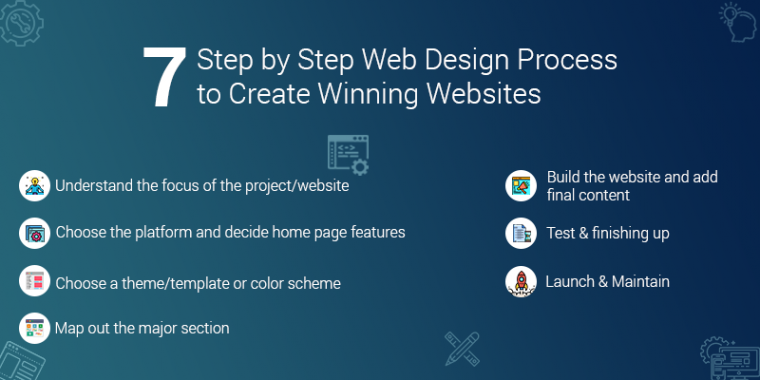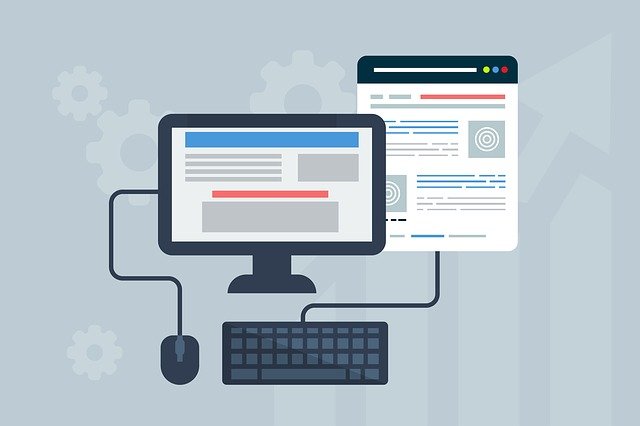
The UX design field is booming as more companies begin to recognize the value of user experience. The demand for UX professionals is increasing, as are the salaries. Experts believe that 10% of UX professionals earn more than $109,000.
Future challenges will require the skills of people who have a special skill set such as UX. Artificial intelligence (AI) can automate many pixel-pushing processes, freeing up time for designers to focus on more important problems. However, AI can't solve all of the issues.

The history of UX design is crucial to understand the future. This includes the advancements in internet access, which accelerated the trend of UX design. In the beginning, design trends were what companies focused on. But now, it is all about providing an excellent experience for customers.
Voice technology, for example, will make a huge impact on human-computer interaction. Siri, Google Assistant, Apple's Bixby and Siri are all voice assistants that are available now and will continue growing in the future. These assistants are targeted at smartphones, tablets, and embedded microphones.
Augmented reality is another UX design trend you should be aware of. This technology is currently being used by a computer to display images and video as virtual objects. The technology is still in its early stages, but it has been shown to be compelling and engaging. AR has been adopted widely by large brands like Apple, Google, Facebook. It's expected that AR will continue to grow in the future because of many reasons.
A new set of design challenges are being presented by the rapid growth in mobile devices. The screen area is relatively small. The future UX interface might be flexible enough for smaller devices.

UX designers must be willing to invest their time and energy in order to influence the future direction of UX. It's difficult for new designers to break into this industry. With advanced design systems, junior designers are now able to develop the same level of skills as those who work in higher-ups.
UX designers will be in demand as the Internet of Things continues to grow. The Internet of Things will have 75 billion devices by 2025. To provide seamless experiences, these devices will have to be able interact with each other. By 2025, the average UX designer's job will be changing significantly.
A significant trend is also the expansion of skills. AI is expected to improve UX productivity and efficiency. Many of the most common design tasks, such as figuring out contrast in texts, can be automated. Additionally, the ability to translate digital languages will be increasingly beneficial.
Although the job descriptions for UX specialists are changing, the skills required to be a good designer are still very important. Designers will still need the ability to spot problem areas and to ask the right question. The designers will also need to demonstrate empathy towards the users' problems.
FAQ
Do I require technical skills to design or build my website?
No. It doesn't matter what HTML or CSS you know. Online tutorials can be found that cover both HTML and CSS.
Can I create my own website with HTML & CSS?
Yes, you can! It is possible with basic knowledge of web design, programming languages like HTML (Hyper Text Markup Language), CSS (Cascading style Sheets), and HTML (Hyper Text Markup Language). These languages allow you create websites that can be viewed by anyone with internet access.
Can I create my own website with HTML & CSS?
Yes! If you've followed the steps, you should now be able create your website.
Now that you are familiar with how to create a website's structure, you will also need to be familiar with HTML and CSS programming.
HTML stands to represent HyperText Markup Language. You can think of it as writing a recipe. It would include ingredients, instructions, as well as directions. Similarly, HTML tells a computer which parts of text appear bold, italicized, underlined, or linked to another part of the document. It's the language for documents.
CSS stands for Cascading Style Sheets. It is like a stylesheet that you use to create recipes. Instead of listing every ingredient and instructions, you create general rules about font sizes, colors, spacing and other details.
HTML tells your browser how to create a web page. CSS tells you how.
If you don't understand either of those terms, don't fret. Follow these tutorials to create beautiful websites.
How do I choose a domain name?
It is crucial to choose a great domain name. Without a great domain name, people will not know where to find you when they search for your product.
Domain names need to be short and simple to remember, relevant for your brand, and unique. You want it to be something people will type into their browser.
Here are some ideas to help you choose a domain.
* Use keywords that are related to your niche.
* Do not use (-), hyphens in your numbers and symbols.
* Don't use.net or.org domains.
* Don't use words that have been used before.
* Try to avoid generic terms like "domain" or "website."
* Make sure it is available.
What kind of websites should I make?
This depends on your goals. It may be best to sell online your products to build a company around your website. To make this happen, you'll need a reliable eCommerce website.
Blogs are another popular type of website. Each type of website requires different skills. To set up a blog for instance, you'll need to learn about blogging platforms like Blogger and WordPress.
Once you have chosen a platform, it is also important to determine how you can customize the appearance of your site. There are lots of free themes and templates available for each platform.
After you have chosen a platform, it is time to add content. Pages can include images, videos, text and links.
You can publish your website online once you have launched it. Visitors can view your site online once it has been published.
How to Make a Static Site
You have two options when creating your first static site:
-
Content Management System (a.k.a. WordPress): WordPress: This software can be downloaded and installed on your computer. It can be used to create a website.
-
You will need to create a static HTML website. If you have a good understanding of HTML, this is not difficult.
You might consider hiring an expert to design your website if you are planning to build a large site.
However, it is a good idea to start with option 2.
Statistics
- It's estimated that chatbots could reduce this by 30%. Gone are the days when chatbots were mere gimmicks – now, they're becoming ever more essential to customer-facing services. (websitebuilderexpert.com)
- Is your web design optimized for mobile? Over 50% of internet users browse websites using a mobile device. (wix.com)
- In fact, according to Color Matters, a signature color can boost brand recognition by 80%. There's a lot of psychology behind people's perception of color, so it's important to understand how it's used with your industry. (websitebuilderexpert.com)
- It enables you to sell your music directly on your website and keep 100% of the profits. (wix.com)
- Did you know videos can boost organic search traffic to your website by 157%? (wix.com)
External Links
How To
Drupal 7 Web Design Guide
Drupal is today's most popular Content Management System (CMS). It was created in 2003 by DriesBuijtaert from Belgium. The name comes from the two first letters of its developer's names, Dirk Buijtewaard and Pierre d'Herbemont. Drupal was released as an open-source CMS in 2005. There have been many versions of Drupal since then. Today, Drupal is used by many websites and companies around the world.
Drupal is extremely popular among website owners due to several reasons. Drupal is free to download, and easy to install. It is also easy to modify and expand. Third, it is well-documented. It also provides excellent support via forums and IRC channels. Fifth, it is extensible via modules. Sixth it supports multiple languages. Seventh, it is easily customizable. Eighth, it's scalable. It is secure. Tenth, reliable. Finally, Drupal is supported by the entire community. Drupal is the perfect choice for your next projects because of these features.
You may be wondering what makes Drupal different than other CMS systems. It is very simple. Drupal is an open-source content administration system. Drupal is completely free and can be downloaded freely. Drupal gives you total control over your website. You can add or remove pages, change colors, fonts, images, videos, etc.
Drupal is a good choice if you don't have the technical skills to build a website. Unlike other CMS, you don't need to know anything about programming to start building your website. All you need is to learn how to use the essential functions of Drupal. Then you will be able to modify your website according to your needs.
Drupal also offers many pre-built themes as well as plugins. These plugins allow you to improve the functionality of your site. You can use the Contact Form module, for example, to collect visitor contact information. Google Maps can be used to display maps on your site. Drupal includes thousands of premade templates. And these templates give your website a professional look.
Drupal's flexibility makes it extremely flexible. Drupal is extremely flexible. You can add new modules to your site or even replace them without worrying about compatibility. It's easy to integrate social media on your website. You can also setup RSS feeds or e mail subscriptions.
Drupal can also be customized. Drupal lets you add custom fields, forms, manage users and much more. Drupal can be used to create complex layouts.
Drupal is reliable and robust. Drupal is reliable and easily scalable. It also offers great security features. So if you're looking for a good web development platform, then Drupal is worth considering.